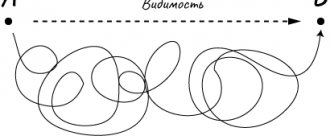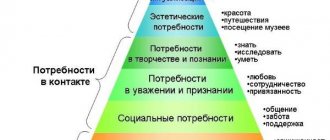The Yerkes-Dodson Law explains why, by striving hard to achieve a goal, we can significantly increase the risk of failure? How can high interest in achieving the desired result play a cruel joke and become, according to the Yerkes-Dodson law, the reason that the case will be abandoned halfway? It turns out that excessive persistence and interest in the result are not always good. But why does this happen?
Discovery of the Yerkes-Dodson law
At the beginning of the last century, British psychologists Dodson and Yerkes studied the peculiarities of the movement of rats through a maze when exposed to electric shocks. At first, as its strength increased, the animals began to run across it faster. But another increase in the strength of the impulses led to an unexpected result - the time to complete the maze did not decrease, but increased.
These data have attracted particular attention from scientists. After a detailed study of the situation, it turned out that the cause of what was happening was excessive stress. It resulted in panic behavior in rats and their chaotic movement through the maze. Therefore, the time to exit it has increased significantly.
More details about the provisions of the law
The famous ancient Roman philosopher Cicero wrote: “Passion is an excessively strong movement of the soul.” And this quote is not about love relationships at all. It refers to an excess of emotion in any activity and perfectly captures the essence of the Yerkes-Dodson Law of Motivation. It is described in more detail by the following two provisions:
- The dependence of the effectiveness of actions on the level of motivation looks like a curve in the shape of an inverted letter U. According to it, with increasing motivation, the quality of activity increases only at the beginning. After reaching optimal motivation, it begins to rapidly decline.
- According to the Yerkes-Dodson law of optimum motivation, there is an inverse relationship between the level of sufficient motivation and the degree of difficulty of the task. To successfully achieve a difficult goal, its level must be lower than for a less difficult goal.
Four Influential Factors
The inverted U pattern is different for each person depending on the situation. In fact, there are four factors that can influence this curve: skill level, personality, trait anxiety, and task difficulty.
An individual's level of ability also influences his performance in a given task. A highly skilled person who is confident in their abilities is more likely to be able to handle high-pressure situations appropriately because they can rely on their well-rehearsed responses.
Important!
A person's personality also plays a big role in how they deal with pressure. Psychologists believe that extroverts cope better with pressure than introverts. Thus, it can be assumed that introverts perform better when there is no pressure.
Regarding the nature of anxiety, a person's confidence also affects the way they manage any situation. A confident person is more likely to remain under pressure because they will not doubt their abilities in the same way as an insecure person.
Important!
Finally, task difficulty is another factor that affects a person's performance. Making copies is not as difficult as writing an essay or report. However, the difficulty of the task varies from one person to another.
Examples of the Yerkes-Dodson Law
Vivid examples of its manifestation include the following situations:
- Failures of responsible excellent students in important entrance exams.
- Failures in losing weight among people who take the matter seriously.
- Refusals to hire people who have been thoroughly preparing for an interview for a long time.
The examples given reflect paradoxical situations in the understanding of many of us. After all, in them, result-oriented people fail due to excessive motivation. The Yerkes-Dodson Law opens up performance in a new way by emphasizing a moderate attitude. How is this possible?
Where to apply?
In progress
Especially if you are a leader. Most often, employers strive to reward employees as highly as possible, thinking that then they will take their work more responsibly. But later it turns out that this, on the contrary, causes them to have a negative attitude towards their responsibilities.
And the level of stress increases due to competition and tension. Emotional instability due to the excitement and excessive involvement in the process negatively affects concentration. Which subsequently leads to mistakes and even apathy. Since energy is also expended to the maximum.
For self-development
Your motivation must be optimal, otherwise you will not achieve the expected development and changes in the psychology of your personality. For example, if you want to lose weight and all your thoughts are occupied only with this idea, you won’t be able to stay on proper nutrition for long.
You will simply interfere with yourself and provoke breakdowns. Exhaustive workload and food restrictions will lead to extreme stress. Which, as you can learn from this article, brings a lot of harm to health.
You need to calm down, realize that losing weight is most likely a long process and you should carry out what you planned without fuss. Then there is a chance to feel pleasure and satisfaction, gradually seeing the desired results.
How does the Yerkes-Dodson law work?
The Yerkes-Dodson law of optimal motivation helps determine a sufficient level of interest that will not interfere with achieving the desired result. But why and at what point can aspiration suddenly become a fatal obstacle?
The fact is that increasing motivation can cause unwanted emotional states. First, it stimulates an increase in tension in the subcortex of the brain. Excessively strong impulses begin to attack the cortex and provoke its diffuse excitation. As a result, feelings of anxiety, fear or worry arise that can destroy and turn into dust any plan of action.
According to the Yerkes-Dodson law, the optimal level of anxiety also plays an important role, not just motivation. It should allow a person to make informed decisions and not become a cause of panic and energy drain.
Provisions
Consequently, based on the results of their experiments, Yerkes and Dodson formed a law that consists of the following provisions:
- There is an optimum of motivation, that is, its optimal level, which should be adhered to if it is necessary to achieve the desired results of activity.
- The more complex the activity, the less motivation will be optimal. That is, with an easy task, increasing the reward will have a positive effect, but not soon. But if it’s complicated, on the contrary, it will only get in the way.
What criteria are used to determine optimal motivation?
| Signs of optimal motivation | Signs of loss of optimum motivation |
| A stable attitude in a given direction. | Increasing tension, turning into nervousness. |
| An adequate response to what is happening, including unforeseen difficulties. | Repeated errors. Replacing sincere enthusiasm with a purely strong-willed attitude. |
| Persistent interest in the work process. | The desire to quit what you started. Increasing anxiety and fear. |
| Finding creative solutions to problems. | Panic and inability to calmly perceive unforeseen circumstances. |
Influential factors in the relationship between stress and performance
There are at least four factors that have a very important role in the relationship between activation level and performance: the difficulty of the task, the skill level of the person performing it, his personality in general, and the trait anxiety factor in particular. Each of them modulates the action of the Yerkes-Dodson law in its own way.
Difficulty of the task
If the task we have to perform is difficult, we will need to invest more cognitive resources (for example, in terms of attention or working memory) than if it were not. Accordingly, complex tasks require a lower level of pressure so that optimal performance is achieved than simple ones, since they stimulate themselves.
This leads to the idea that it is important to adapt environmental pressure levels to the complexity of the task in order to improve performance, so that a calm environment is more appropriate when performing complex tasks, while an Enriched environment can help improve quality when solving simple tasks
Skill level
As is the case with task complexity, consideration of the subject's skill level is transcendental in determining the ideal environmental pressure. We can say that practice in a domain reduces the difficulty of the tasks that are included in it. Thus, the relationship of these two variables can be useful in applying the Yerkes-Dodson law.
Personality
It would be reductionist to think that changing the level of stimulation or environmental pressure without extra effort could allow us to reliably influence the performance of other people: if we did this, we would be ignoring something as important as the personality of each person. Thus, for example, if we follow the neurobiological theory of personality proposed by Hans Eysenck, we can conclude that extroverted people tend to require higher levels of brain activation to achieve optimal brain performance, while biologically introverted people generally prefer so that the pressure on the environment is minimal
Thus, for example, if we follow the neurobiological theory of personality proposed by Hans Eysenck, we can conclude that extroverted people tend to require higher levels of brain activation to achieve optimal brain performance, while biologically introverted people generally prefer so that the pressure on the environment is minimal.
Article on the topic: “Eysenck’s Theory of Personality: PEN Model”
Anxiety is a trait
The personality factor we know as “trait anxiety” refers to the tendency to experience negative emotions associated with anxiety, such as worry, fear, and worry. Trait anxiety forms the core of the construct of Neuroticism; in this sense, it is the opposite of the emotional stability factor.
As you might expect, people who have a strong tendency to feel anxious almost always react negatively to increased stress levels. As with introverts, it can be a serious mistake to forget that people with this characteristic perform better under low levels of stimulation.
Maybe you are interested: "Neurosis (neuroticism): causes, symptoms and characteristics"
Using the Yerkes-Dodson Law in Practice
The Yerkes-Dodson law of optimum allows you to plan the competent achievement of a goal, determining a sufficient, but at the same time safe, level of motivation.
In workflows
Understanding optimal motivation helps managers improve the performance of their employees. Given this, they will not use pay manipulation to improve results. After all, the competition that arises because of this can cause psychological discord in the state of subordinates and deterioration in work results. Also, people in any position can intelligently approach motivation and performance based on the Yerkes-Dodson law.
In self-development
When striving for personal growth, we should not be overly persistent and burden ourselves. Remember, any change takes time and patience. In order not to give up prematurely, you should take care of keeping your motivation at a sufficient level.
In sports
Using this phenomenon, you can intelligently control your mood in physical activity. This will help prevent premature breakdowns and burnout. After all, sport requires the ability to calculate strength, and not waste it at the very beginning of the race. Experienced trainers are familiar with the concept of optimal motivation. They always help their clients maintain it for the required period.
Experiments
On animals
In 1908, respectively, Yerkes and Dodson decided to conduct an experiment on mice to find out what effect the strength of motivation had on their performance at completely different levels of task difficulty.
The subjects had to successfully navigate the maze by initially choosing the correct entrance. If they completed the task quickly and successfully, a reward awaited them at the end, directly from an individual of the opposite sex. In extreme cases, an electric shock of completely different strength.
So, it turned out that if a small shock was given during the task, the mice would speed up, but if it was quite painful, they began to move more slowly, sometimes getting completely lost in the maze, not finding a way out.
Subsequently, a similar experiment was carried out on chimpanzees, cats and even chickens, the results of which only confirmed the theory.
In public
After presenting a group of subjects with puzzles, the experimenters offered a monetary reward for solving each problem as an incentive. Moreover, the reward, initially completely insignificant, increased several times with each completed task, gradually reaching a significant amount.
It turned out that for symbolic money people worked somehow, completely without enthusiasm. It began to grow along with the so-called salary. Labor efficiency also increased. But when the amount became unreasonably high, panic began in the group, which led to errors in work.








